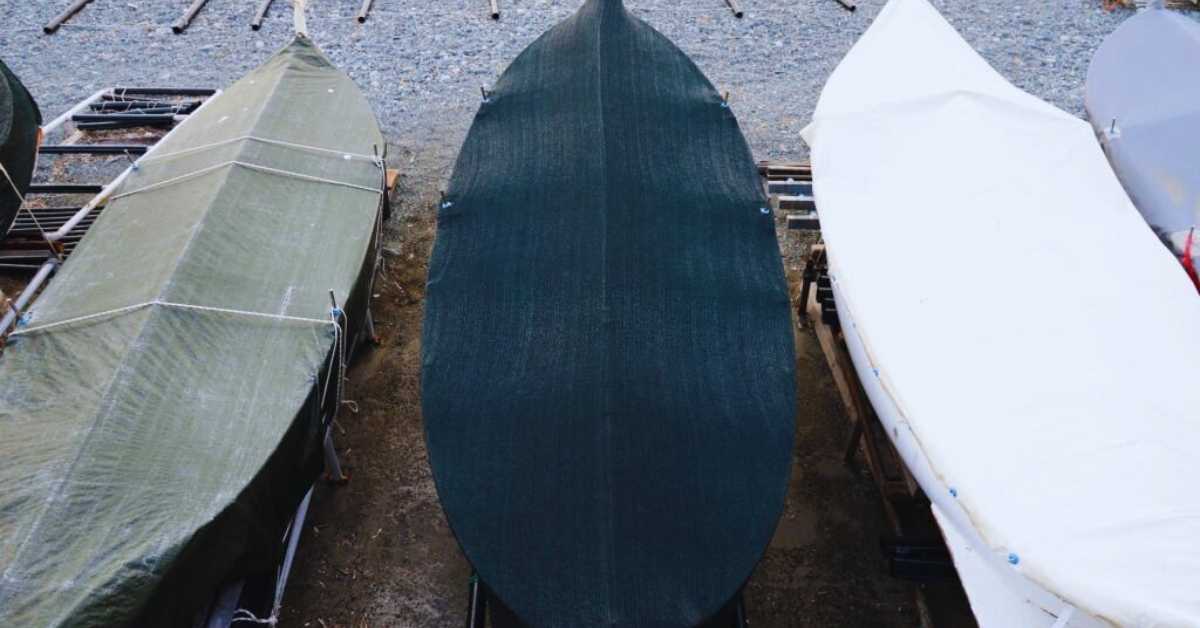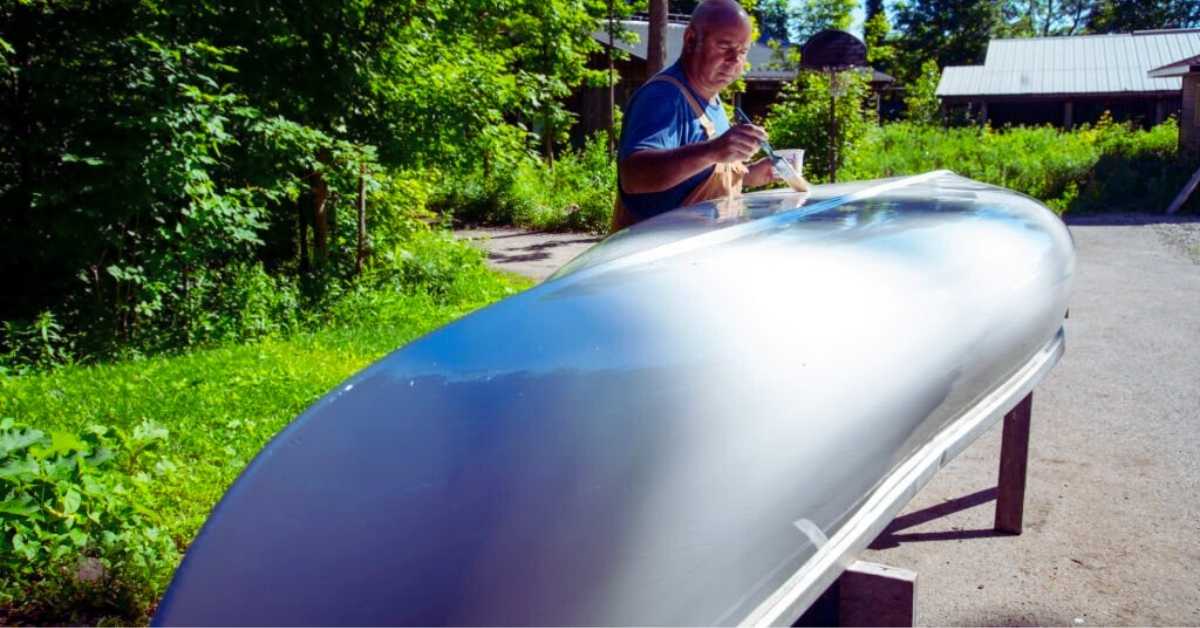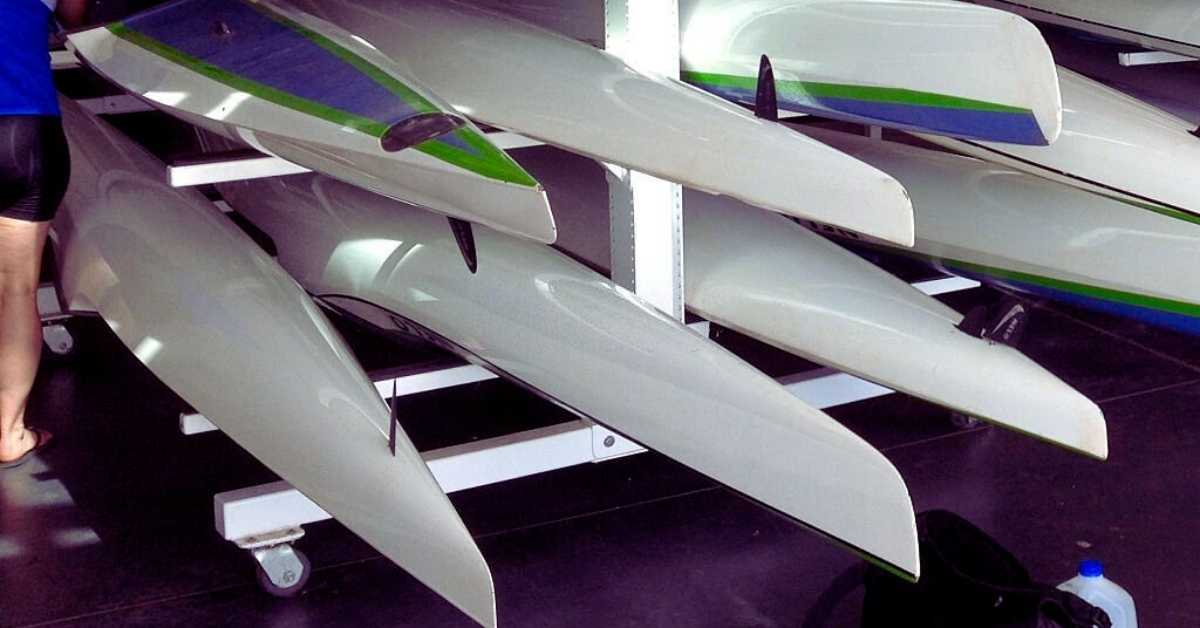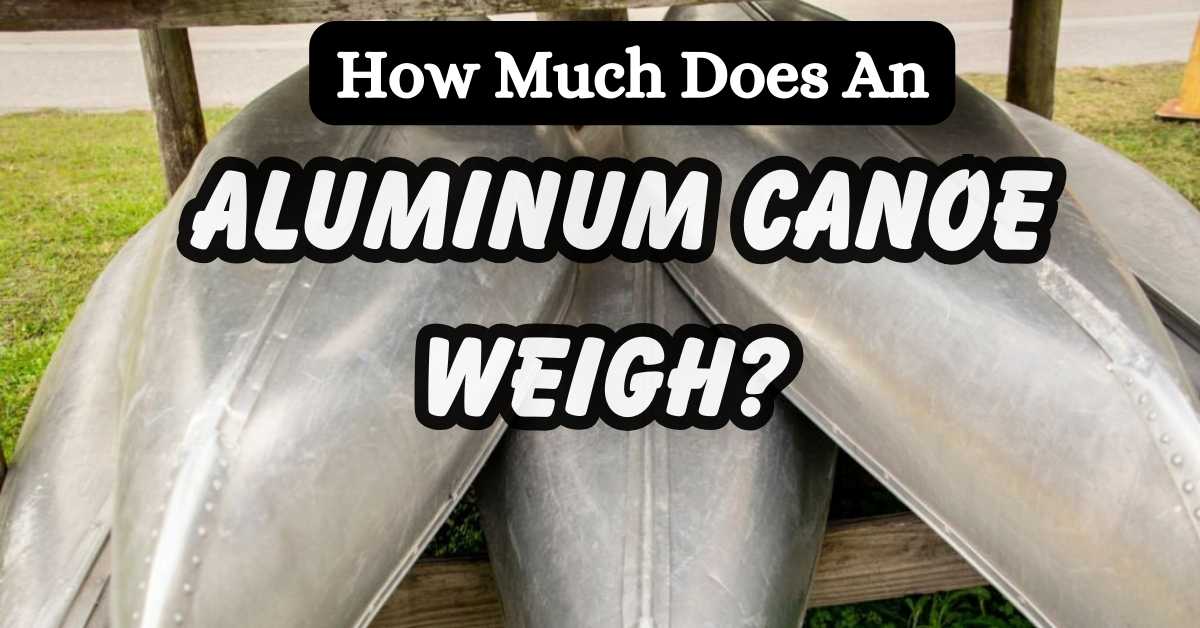Are you planning your next adventure on the water and wondering about the weight of an aluminum canoe? Look no further! In this section, we will explore the question: “How much does an aluminum canoe weigh?”
When it comes to choosing a canoe, weight is an important factor to consider. Aluminum canoes are known for their durability, strength, and lightweight characteristics.
Compared to other materials like fiberglass or wood, aluminum canoes strike a balance between sturdiness and portability.
Table of Contents
Aluminum Canoe Weight Range
Standard Aluminum Canoe Weight
An aluminum canoe weighs 55–75 pounds (25–34 kg). This weight depends on the canoe’s size, design, construction, and extras.
Heavy-duty aluminum canoes may weigh more than lighter ones for mobility. Consider your requirements and how the weight of the aluminum canoe matches your plan purpose, such as leisure paddling, fishing, or wild trips.
Ultralight Aluminum Canoes

Heavy-Duty Aluminum Canoes
Heavy-duty aluminum canoes vary in weight based on size, design, and manufacture. However, these aluminum canoe weight ranges are approximate:
1. Solo aluminum canoes: Solo aluminum canoes typically weight 45–65 pounds (20–29 kilos). Single-paddle boats are used for fishing and leisure paddling.
2. Tandem Canoes: Two-person aluminum tandem canoes weigh 60 to 85 pounds. These canoes are ideal for camping and family vacations.
3. Expedition boats: Heavy expedition-style aluminum boats carry more luggage and passengers. Weight may range from 75 to 110 pounds (34 to 50 kg).
Weight Comparison with Other Canoe Materials
Aluminum Canoes:
For rocky rivers and difficult circumstances, aluminum canoes are sturdy and can tolerate severe handling.
Cost: Budget-conscious paddlers might choose them since they are cheaper than other boats.
Since aluminum canoes resist decay, corrosion, and UV damage, they need little maintenance.

Weight: They are heavier than certain materials, however contemporary production has made them lighter than previous versions.
Versatility: They come in numerous sizes and styles for leisure paddling and outdoor adventure.
Fiberglass Canoes:
Weight: Lightweight fiberglass canoes are simple to carry and manage, particularly during portages.
They are strong and durable, although they may be more susceptible to impact damage than aluminum or Kevlar canoes.
Fiberglass canoes need care to maintain the gel coat surface from UV damage and fractures or leaks.
Price: They cost more than aluminum canoes but less than Kevlar ones.
Wooden Canoes:
Traditionalists love wooden boats for their timeless, exquisite aesthetic.Lightweight hardwood boats compete with fiberglass and Kevlar canoes in weight.
Woodworking: Building or refurbishing wooden boats requires several steps and specific expertise.
Maintenance: Varnish or oil wooden boats regularly to maintain their condition.
Kevlar kayaks:
Kevlar canoes are lightweight and good for lengthy portages and shipping.
Similar to fiberglass, they are strong and durable.
Kevlar canoes are the most costly owing to their high-quality materials and construction.
Low Maintenance: They just need to preserve the gel coat finish.
Choosing the Right Weight for Your Needs

The weight of your aluminum canoe depends on your demands, usage, and preferences. Consider these criteria while choosing an aluminum boat weight:
1. Consider how to carry your watercraft: A roof rack or trailer makes it easier to carry a heavier boat. A lightweight boat may be easier to transfer onto a vehicle roof or carry for portages.
2. Portaging: A lightweight canoe is easier to portage on wilderness journeys when you must carry it between bodies of water. Low-weight aluminum canoes, particularly solos, are excellent for portaging.
3. Copacity: Consider the number of people and gear you intend to transport. If you need to carry a lot of goods or people, a heavier aluminum canoe may be better.
4. Durability vs. Weight: Consider paddling conditions. For longevity, a heavy-duty aluminum canoe with increased weight may be best for stony rivers or tough circumstances. If you mostly paddle quiet lakes, an aluminum canoe may work.
5. Budget: Your budget may affect your choice. Lighter Kevlar boats cost more than heavier aluminum ones.
6. Personal Strength and Fitness: Consider your personal fitness and strength. If you can handle bigger cargo and portage, a somewhat heavier canoe may be OK.
Maintenance and Care for Lightweight Canoes
Here some Maintenance advice for lightweight canoes:
Regular Cleaning:
- Clean the canoe with fresh water after each trip to eliminate salt, sand, and debris.
- Clean the canoe inside and out with mild, non-abrasive soap.
- Avoid strong chemicals and scrubbers that might harm the canoe’s finish.
Storage:
- Store the boat away from direct sunlight and excessive temperatures in a cool, dry spot.
- Use a high-quality, UV-resistant cover to protect the canoe from the elements while keeping it outdoors.
Check for Damage:
- Check the hull for cracks, scrapes, and punctures.
- Fix minor damage immediately to avoid further harm. Repair instructions are available from the manufacturer.
Gelcoat Maintenance (Fiberglass Canoes):
- Gel coat fiberglass boats may fade or develop hairline fractures. The gel coat may be maintained by waxing the canoe occasionally.
- Use a canoe or boat-specific marine wax or shine.
- Best results are achieved by waxing and buffing according to product directions.
Wooden Canoe Maintenance:
- To prevent moisture and UV damage, wooden boats may need varnishing or oiling.
- Reapply varnish or oil as required to preserve the finish and follow the manufacturer’s wood care instructions.
Repairing Minor Damage:
- Use a gel coat repair kit for fiberglass canoes or wood filler for wooden ones to fill and smooth small scratches and gouges.
- Repair Kevlar canoe punctures and rips using a composite repair kit.
Avoiding Hard Hits:
- Lightweight boats are more impact-prone than aluminum ones. Avoid hitting rocks, logs, and other hard things.
- Use correct paddling tactics to avoid obstacles and safely negotiate difficult seas.
Transportation:
- To protect the canoe’s hull, utilize cushioned carriers or foam blocks on your roof rack.
- Fix the canoe to your car to prevent it from moving.
Paddle Techniques:
- Use correct paddling methods to prevent canoe tension. Avoid sudden stops, quick bends, and bumpy boat surfaces.
Lubricate Hardware:
- Lubricate hinges and locks on your lightweight canoe with marine-grade oil to prevent corrosion and maintain smooth operation.
Wrapping Up
When selecting an aluminum canoe, it’s crucial to consider its weight along with other factors such as size, design, and intended use. The weight of an aluminum canoe is influenced by these aspects.
Expedition-style boats are heavier than solo canoes. The canoe weight you pick must match your demands, transportation capabilities, and planned usage.
